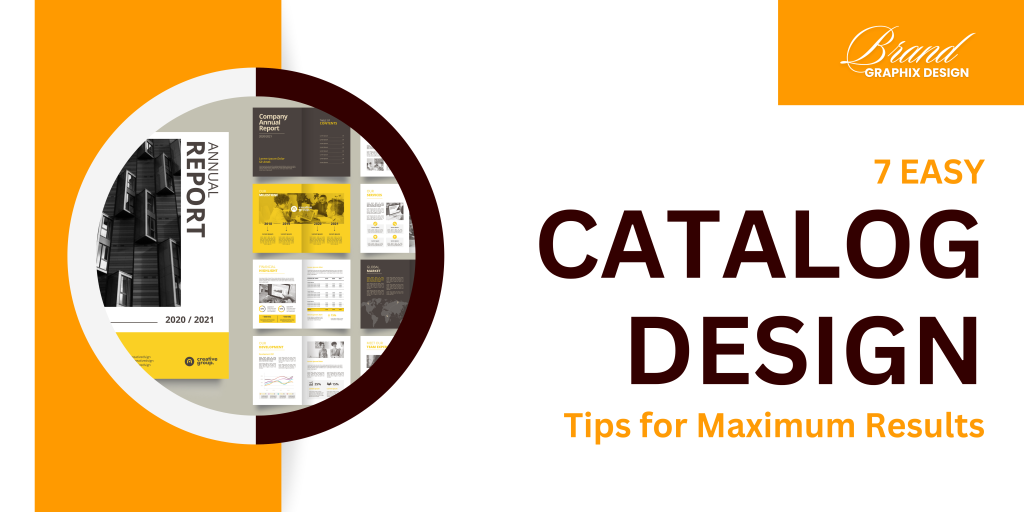1. Keep Your Layout Clean and Simple
A cluttered catalog can overwhelm your customers, causing them to lose interest and miss important products. To create a catalog that’s both visually appealing and easy to navigate, start with a clean, simple layout. Use a grid system to organize your content and ensure that each page has a balanced distribution of images, text, and white space. This allows your readers to focus on the content and makes the catalog feel less overwhelming. A simple layout also ensures that your catalog is readable across all devices and formats. Use large fonts for headings, and break up text with images or bullet points to make it easier for customers to scan through your offerings. Remember, less is often more when it comes to design—aim for simplicity to create a pleasant, engaging experience that encourages conversions.
2. Use High-Quality Images
Images are the focal point of any catalog, as they give customers a clear view of the products you’re offering. Low-quality or poorly lit images can make your products appear unprofessional and could result in lost sales. Ensure that all the images you use are high-quality, well-lit, and accurately represent the products. Use high-resolution images to maintain clarity across both digital and print formats. Product shots should be close-up and detailed to showcase key features and textures. Additionally, consider using lifestyle images that show the product in use, as this helps customers visualize how it would fit into their lives. By investing in high-quality photography, you increase the likelihood of making a lasting impression on your customers and boosting sales.
3. Organize Your Products into Clear Categories
Catalogs that are easy to navigate are more likely to result in purchases. Group your products into clear, well-defined categories that make sense to your audience. For example, if you sell clothing, categories might include “Men’s Apparel,” “Women’s Apparel,” “Accessories,” and so on. Consider the logical flow of the catalog and make sure customers can easily find what they’re looking for. Use consistent headings and subheadings to separate each category, and be sure to include a table of contents at the beginning of your catalog to allow for easy navigation. Additionally, make use of index pages or sections with product descriptions, so customers can quickly get an overview of the available items. A well-organized catalog helps your customers shop more efficiently and encourages them to explore more of your products.
4. Make Your Call-to-Action Clear and Visible
A catalog is only effective if it drives action. To encourage customers to take the next step, your call-to-action (CTA) should be clear, compelling, and easy to find. Whether you want customers to make a purchase, sign up for a newsletter, or visit your website, make sure the CTA stands out on each page. Use contrasting colors or bold fonts to make the CTA button or link noticeable, and place it strategically near relevant products or offers. It’s also helpful to include multiple CTAs throughout your catalog, such as one at the beginning, middle, and end, to ensure customers are always reminded of how to proceed. A strong, well-positioned CTA encourages customers to take action and increases the likelihood of achieving your catalog’s goals.
5. Use Consistent Branding
Your catalog should reflect your brand’s identity and values. Consistent branding helps reinforce your company’s personality and builds trust with customers. Use your company’s color palette, logo, and typography consistently throughout the catalog to create a cohesive look. The design elements should align with the tone and image of your brand. For example, if your brand is fun and casual, you might use bright colors and playful fonts. On the other hand, a luxury brand may prefer elegant typography and minimalist design. Consistent branding not only creates a visually pleasing experience but also fosters brand recognition, ensuring customers remember your company and return for future purchases.
6. Include Clear Product Descriptions
While images are critical in your catalog, detailed product descriptions are just as important. A brief but informative description helps customers understand the features and benefits of each product. Avoid using long paragraphs—keep it concise and focused on the key selling points. Highlight the product’s unique features, such as its size, material, or functionality, and be sure to mention any special offers or promotions. Including product specifications, such as dimensions, colors, and availability, gives customers the information they need to make a decision. Well-written product descriptions can answer potential questions and reduce the likelihood of returns. Including this essential information can significantly boost your catalog’s performance by helping customers make more informed purchasing decisions.
7. Optimize for Both Print and Digital Versions
In today’s digital age, it’s important to optimize your catalog for both print and digital formats. While print catalogs offer a tactile, traditional shopping experience, digital catalogs allow for interactive elements such as links, videos, and zoom features. Make sure that the layout and design are adaptable to both formats, ensuring that the catalog looks good whether it’s viewed in print or online. For digital catalogs, make use of clickable links to direct customers to specific product pages on your website, or to offer special promotions. In print catalogs, QR codes can be used to link to the online store or additional product information. By optimizing for both print and digital formats, you reach a wider audience and increase the chances of converting prospects into customers.


